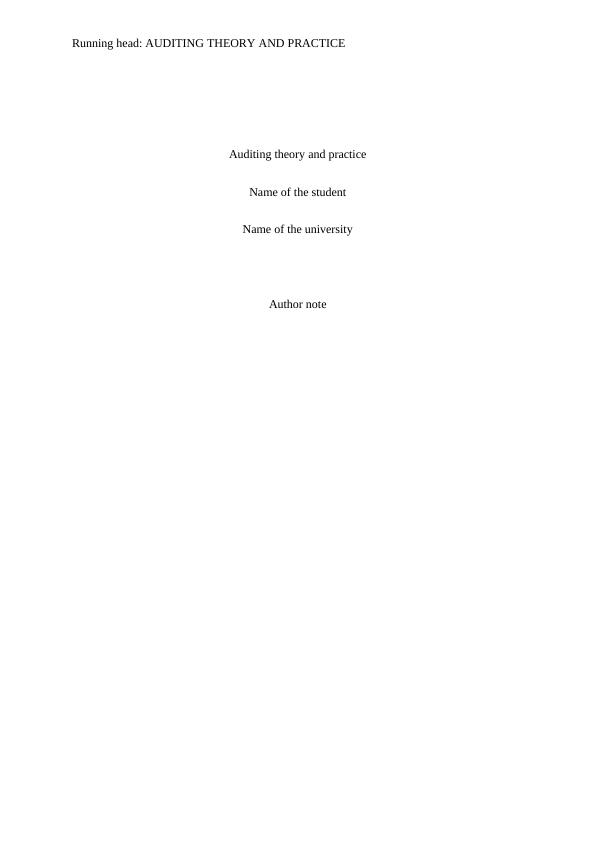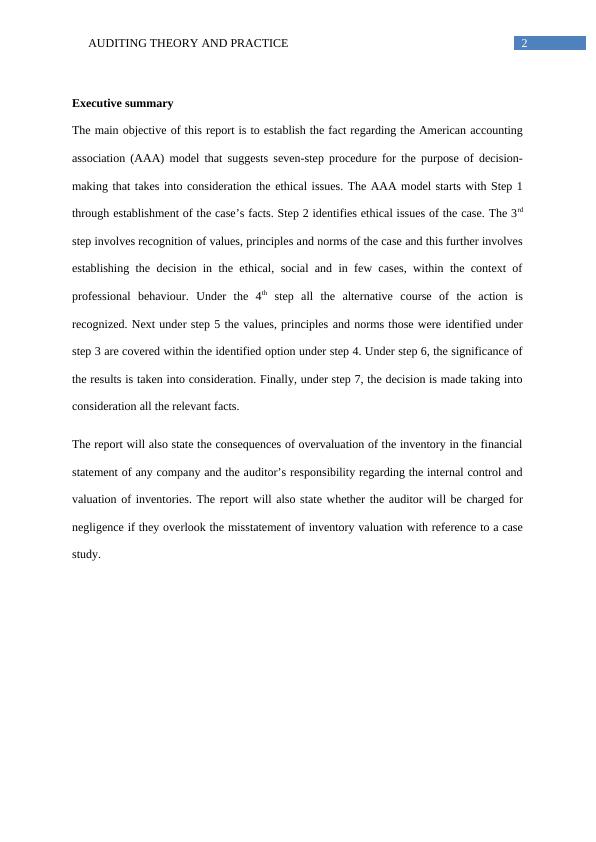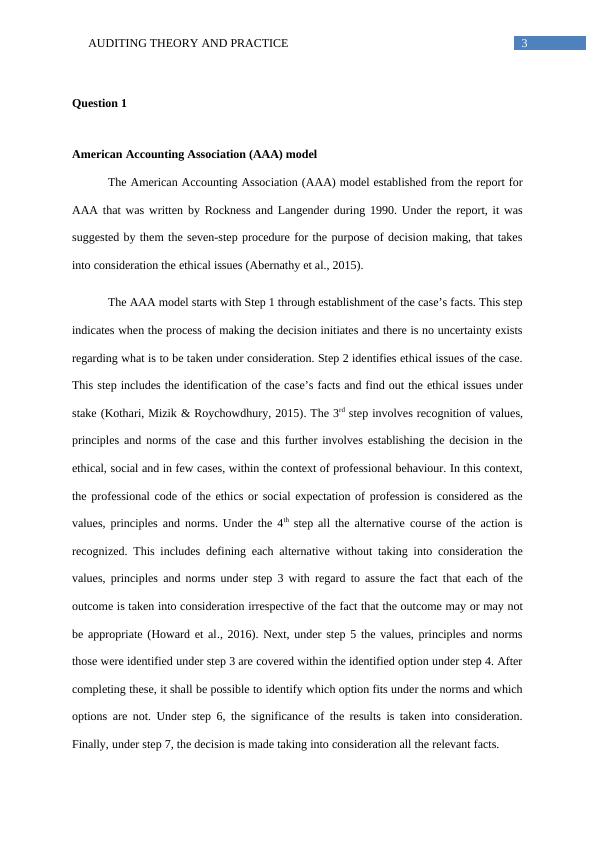ACCT 3005 - Auditing Theory and Practice - Case Study
University of South Australia
Auditing Theory and Practice (ACCT 3005)
Added on 2020-03-01
About This Document
The main objective of this report is to establish the fact regarding the American accounting association (AAA) model that suggests a seven-step procedure for the purpose of decision-making that takes into consideration the ethical issues. This report will also state the consequences of the overvaluation of the inventory in the financial statement of any company and the auditor’s responsibility regarding the internal control and valuation of inventories. The report will also state whether the auditor will be charged for negligence if they overlook the misstatement of inventory valuation with reference to a case study.
ACCT 3005 - Auditing Theory and Practice - Case Study
University of South Australia
Auditing Theory and Practice (ACCT 3005)
Added on 2020-03-01
End of preview
Want to access all the pages? Upload your documents or become a member.




